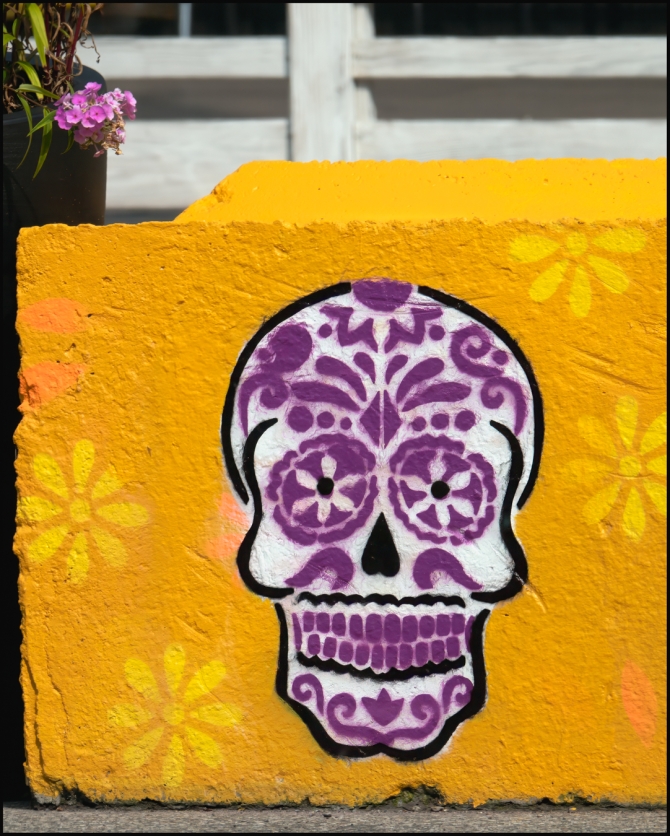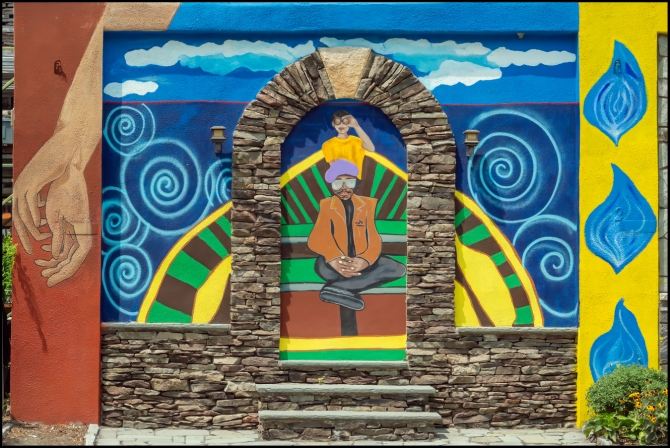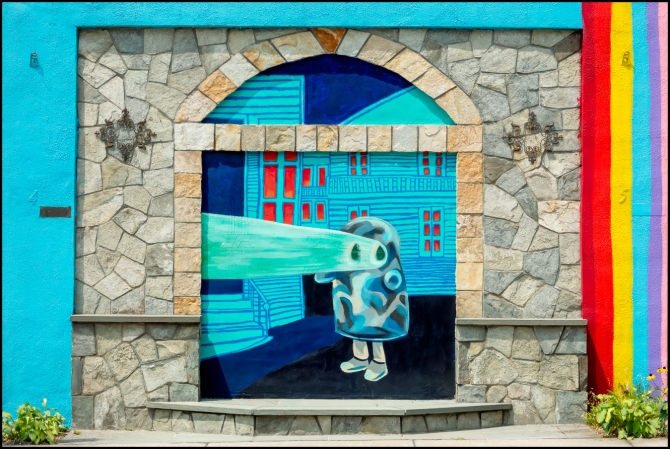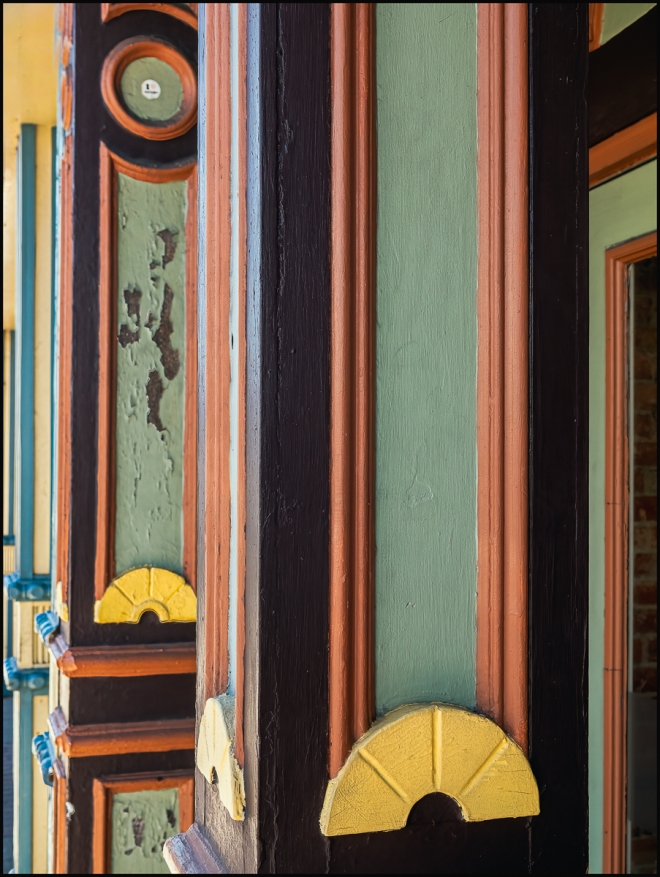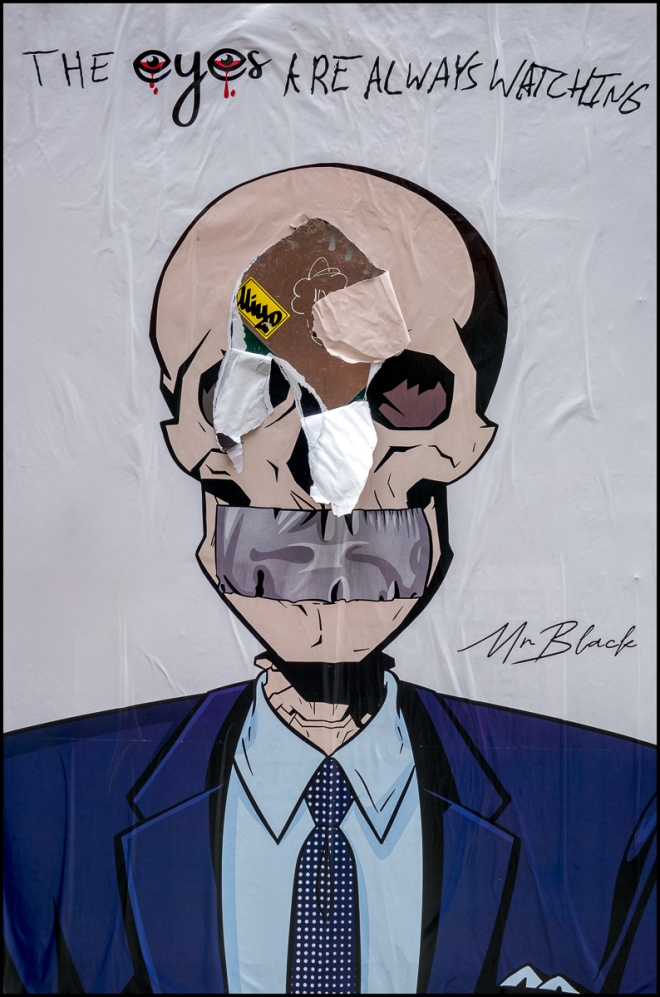I hesitate to finish this short walk around Peekskill, NY with a skull seen outside Taco Dive Bar, but it was the last picture I took before boarding my train back home. And, after all, it’s not a very scary skull with all of its bright colors.
Taken with a Sony RX10 IV

